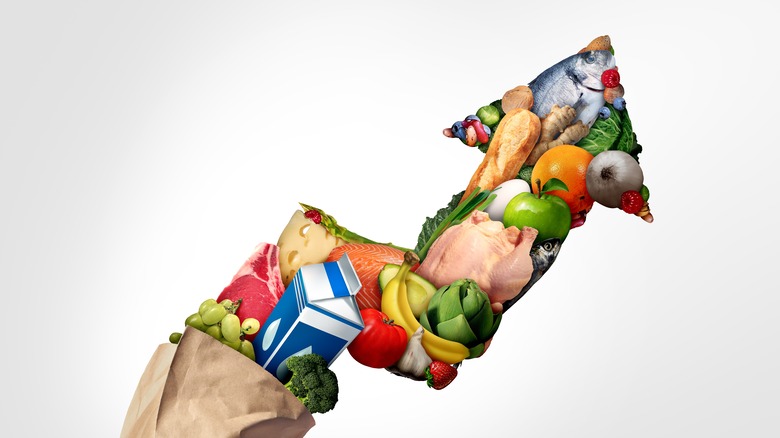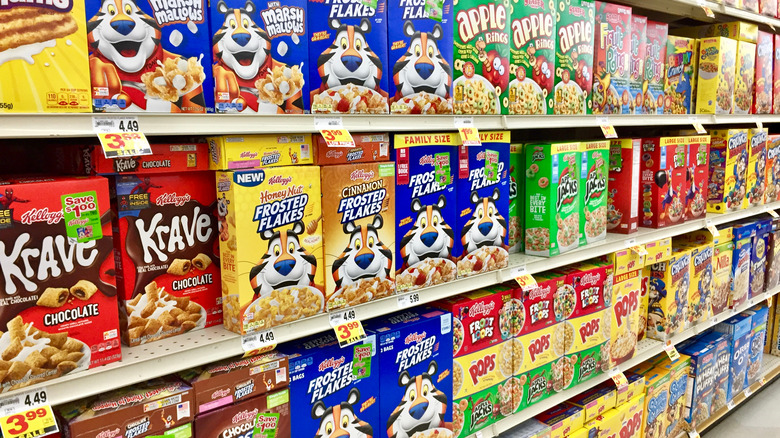Here's How Much The Cost Of Food Increased In September
Back in July when the price of goods were climbing to heights not seen in decades, Bank of America's U.S. economics research head Michael Gapen told NBC Select there was no one reason they could blame for rising prices. Experts could track back to the coronavirus pandemic, which upended many people's lives beginning in 2020. Other reasons include rising gas prices, a healthy labor market, and — particularly where food was concerned — the war in Ukraine, which put a squeeze on food supplies. It was around then that the Federal Reserve began looking to find ways to apply the breaks to keep things from becoming more expensive, and they did that by bumping up interest rates in July and then again in September, per Forbes.
Despite repeated efforts by the Federal Reserve to raise interest rates to get people to stop spending and to try and get inflation under control, the Consumer Price Index still registered a 0.4% increase in September after going up by 0.1% in August and staying flat in July, according to the U.S. Bureau of Labor Statistics. Comerica Bank's chief economist Bill Adams says: "Inflation has built up a lot of momentum over the last year. That's going to keep inflation higher than the Federal Reserve wants it for at least a couple more months—if not a couple more quarters," per The Wall Street Journal.
Cereal prices have risen the most year on year
Figures show the food index for September rose by 0.8%, which is the same percentage it rose in August. The U.S. Bureau of Labor Statistics stated prices in all six grocery food groups saw price hikes, with fruits and vegetables increasing by 1.6%, cereals and bakery up by 0.9%, and prices for meats, poultry, fish, and eggs up by 0.4%. The Bureau's data indicates that the biggest price hikes were in cereals, which went up by 16.2% over the last 12 months, followed by dairy and related products, which rose by 15.9%.
Eating out also became more expensive, rising by 0.9% in September. But on the whole, eating out could be cheaper than buying groceries since the index for "food away from home" went up by 8.5 percent over the past 12 months while eating at home was 13% more costly. On the whole, The Wall Street Journal reports that core prices for everything, excluding food and energy, were at a 40-year high.
But there is some good news for consumers because the price of gas went down by nearly 4.9 percent, while the price of medicines went down by 0.1%. The Wall Street Journal also states some of the problems which caused inflation in the first place, including supply chain disruptions, are starting to ease up, which might help put the breaks on runaway prices in the coming months.

